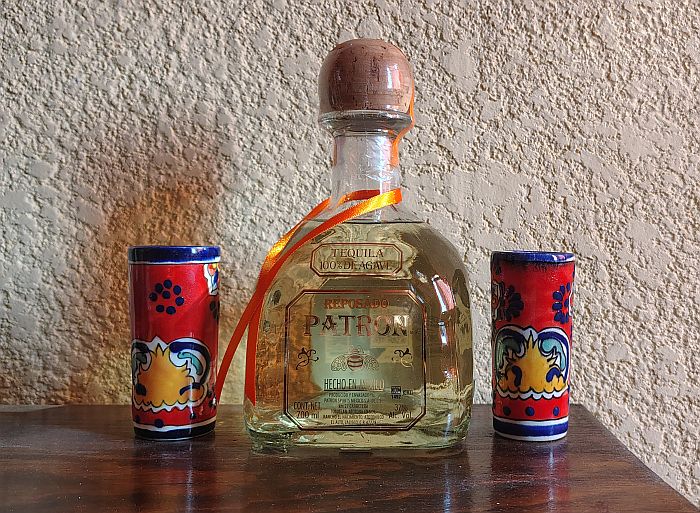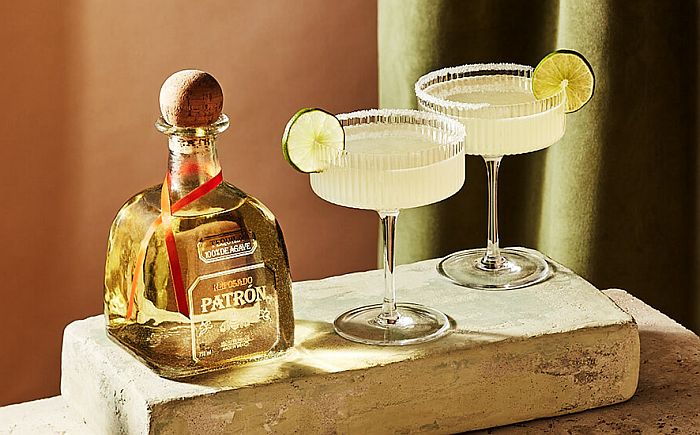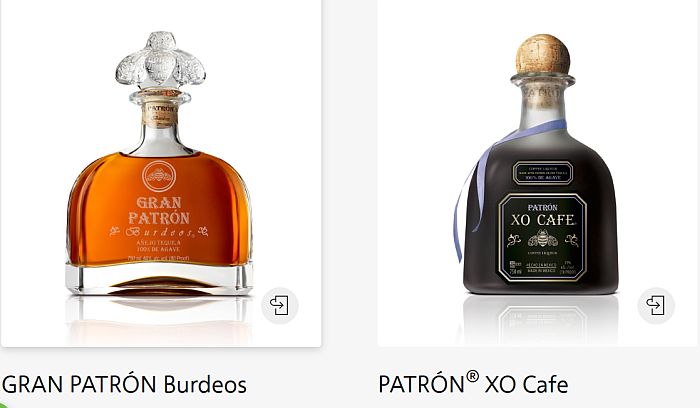When the first version of the Patron tequila I’ve been sipping hit the market in 1989, the concept of a “premium tequila” was still kind of a novel one. Now that it has been around for 36 years, how does it fare when facing exponentially more competition? Why does it remain so popular in bars and restaurants?

I’ve been sipping Patrón reposado a bit lately to see, both in some Mexican resorts and in my home. My overall impression is that it may not be worth any extra hype, but it’s a solid choice that won’t get you in any trouble when ordering it at a client event or buying it as a gift.
It’s a better-than-average tequila in a nicer-than-average bottle and it is one of the best-known premium liquor brands in the world now.
The History of Patrón Tequila
First of all, what does the word “patrón” mean in Spanish? It doesn’t really have an exact translation in English but it’s a respectful form of “boss” or “head of the household.” While boss as a regular word is “jefe” and a business owner could be a “dueño,” calling someone patrón usually means that they’ve earned respect and deserve it. A landlord, owner, or ship captain could also be called by this term.
So it was an appropriate name in 1989 when the two founders aimed to produce an ultra-premium, 100% agave tequila, something that was rare at the time (though it’s hard to believe now). Patrón is considered a pioneer for making high-end tequila mainstream and elevating its status in the USA and then worldwide.
The two founders were Martin Crowley and John Paul DeJoria. If the latter name sounds familiar, it’s because he’s a billionaire who has appeared on Shark Tank and plenty of magazine covers. He may be unlucky in love, with four wives so far, but he certainly had the golden touch in business. Before getting involved with Patron, he co-founded the Paul Mitchell line of hair products.
When they launched the brand, they put their tequila in a much thicker and fancier bottle than others did at the time and they priced each bottle at $37, a sky-high price at the time that only a few other spirits (like 12-year Scotch) were able to command.
The brand’s launch marked a shift in perception for tequila, moving it away from a lower-cost, mass-market product and establishing it as a luxury spirit. They sourced their agave from the highlands of Jalisco, where the climate and rich soil help produce sweeter, more flavorful agave plants.
Most of the big brands at the time, like Jose Cuervo and Sauza, were based in a lower area around the town of Tequila itself. While the big producers were looking for shortcuts to lower costs, this company turned to meticulous production techniques based on tradition, such as using brick ovens, Tahona volcanic stone wheels, and copper stills. Each bottle was numbered. In the early years they produced it in the same complex as Casa 7 Leguas, a brand that’s still around but far less famous. In 2002 they moved to their own facility.

This is now just one more tequila brand of many owned by the huge corporate liquor conglomerates. That doesn’t mean it’s not still good, but Bacardi Limited, one of the world’s largest privately held spirits companies, completed its acquisition of Patrón in 2018. This move added Patrón to Bacardi’s portfolio, helping Bacardi expand into the fast-growing super-premium tequila segment. The transaction was valued at approximately $5.1 billion and got the brand into a distribution system that helped it get onto the shelf in seemingly every high-end restaurant and bar in North America and then beyond.
Bacardi’s ownership brought about a strengthened distribution network and increased global reach for Patrón as this joined a portfolio of around 200 spirits brands. Through Bacardi, Patrón gained enhanced resources for innovation and marketing. The acquisition also allowed Bacardi to capitalize on the rising global demand for tequila.
Patron Reposado Tasting Notes
I stayed at three high-end all-inclusive resorts this month where I got to drink the good stuff during my stay, including some Patron tequila. I really hit the jackpot though at SLS Playa Mujeres when our butler rattled off four choices of liquor I could have one bottle of delivered to my room. One of the choices was Patron Reposado and I said, “Stop right there.” Ten minutes later there was a knock on my door and someone holding this beautiful bottle.
Yes, the first impression is a good one. This is a heavy, hand-blown glass bottle with a nice cork stopper at the top. It has heft and seriousness. My only complaint about the packaging is that the plastic wrap over the stopper was a pain to get off and then the glue used in the additional tape strip that goes across underneath is too sticky. After a while I gave up on trying to get the remaining pieces of it off.
Thankfully they put more thought into the details of what goes inside than they did into the packaging finishing and this is a fine tequila for sipping. The first word I put in my notes was “solid” and that’s how I’d sum up my tasting experience. This hasn’t knocked off the elevated few that are my favorites, but it would definitely be in the top 5% of the 20 or so reposado brands I’ve sampled in the past year.
The nose is a little more alcoholic than most, but this seemed to fade a little as it spent more time in the glass. The agave shines through on first sip and this tequila has a little more heft, and fewer floral notes, than some of the other highland versions. Everything falls into place in a nice cohesive whole, with strong elements of citrus fruits, tropical fruits, and a hint of raw cane sugar.
After a few sips, Patrón Reposado dances across the tongue like a practiced figure skater and there are no off elements or overpowering side notes to get in the way. There’s a nice sweet agave finish that lingers for a while but doesn’t wear out its welcome or become cloying. This reposado is aged four months in used bourbon barrels, not all that long, so the oak mostly calms and refines the spirit rather than adding a lot of taste elements to it.
When I poured a cheaper tequila to taste next to it, in this case some Don Ramon I had sitting around, the difference was quite clear. Patrón tasted far more refined and composed. When I mixed up two cocktails though using the two versions of tequila, I honestly couldn’t tell the difference. As I’ve said many times before, a tequila cocktail is only going to get marginally better even if you quadruple what you paid for the main ingredient. Unless you have a sommelier-level palate, just use any 100% blue weber agave version and you’ll be fine.
Patrón Price and Ultra Premium Options
One irony of the increased competition in the tequila market is that Patrón has become much more affordable in a relative sense. I searched a few online liquor stores like Total Wine and found prices in the range of $39 to $48 for the Patron reposado version. Put next to good bottles of Scotch, Rum, or Bourbon, that’s not unreasonable at all.
This tasting session and an earlier sampling of the añejo version are as far as I’ve gotten on the Patron tequila scale. Since the silver version is probably going into cocktails, I personally wouldn’t pay a premium for that. The flavor gets too masked by the other ingredients so spend a bit less for something “good enough.” (And if you like to sip unaged tequila, the best I’ve had for sipping is Cascahuin.)

If you do want to buy an expensive bottle for someone though and take it up a notch, here are the ultra premium options going for a higher price:
Gran Patrón Platinum – Just a more refined version of the usual.
Patrón XO Cafe and Cafe Dark Cocoa – Flavored versions meant to be a refined after-dinner drink.
Gran Patrón Burdeos – aged in a blend of American and French oak, then finished in Bordeaux wine barrels.
Patrón Extra Añejo – aged more than three years in oak barrels, which is either too much or just right depending on how much you like the added oak overtones.
I’ll get back to my original question in the title: “Is Patron tequila worth the premium?” In 1989 I might have said “not really” when it was priced so much higher than everything else. The price has barely gone up since then, far less than inflation, and there are competitors charging 2, 3, or 4 times as much. So at this price I’d say “absolutely.” It’s a safe bet to order, buy for home, or give as a gift.
See the whole lineup at the official website.
Top photo by the editor Timothy Scott, others courtesy of Patron and Bacardi.

